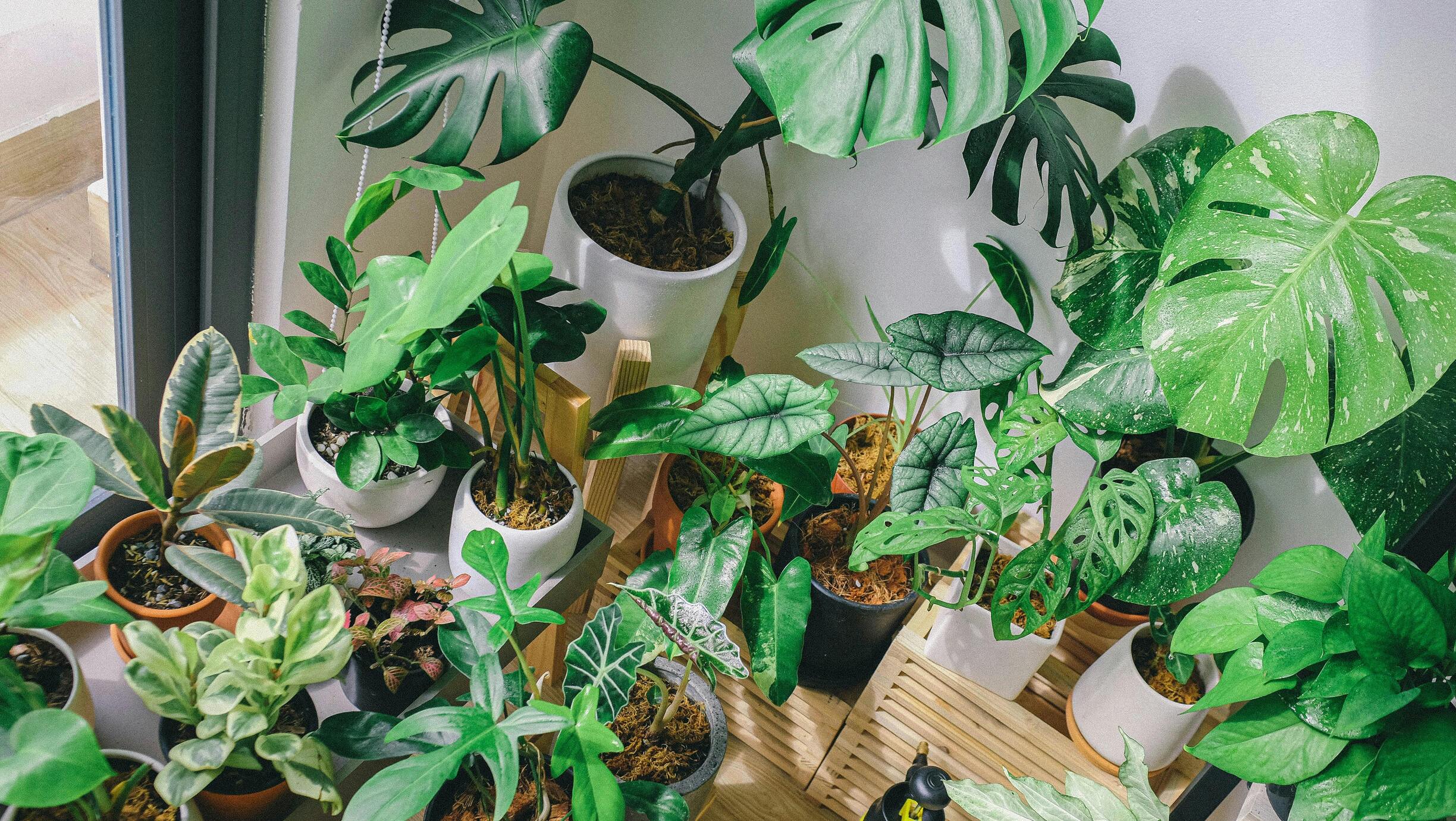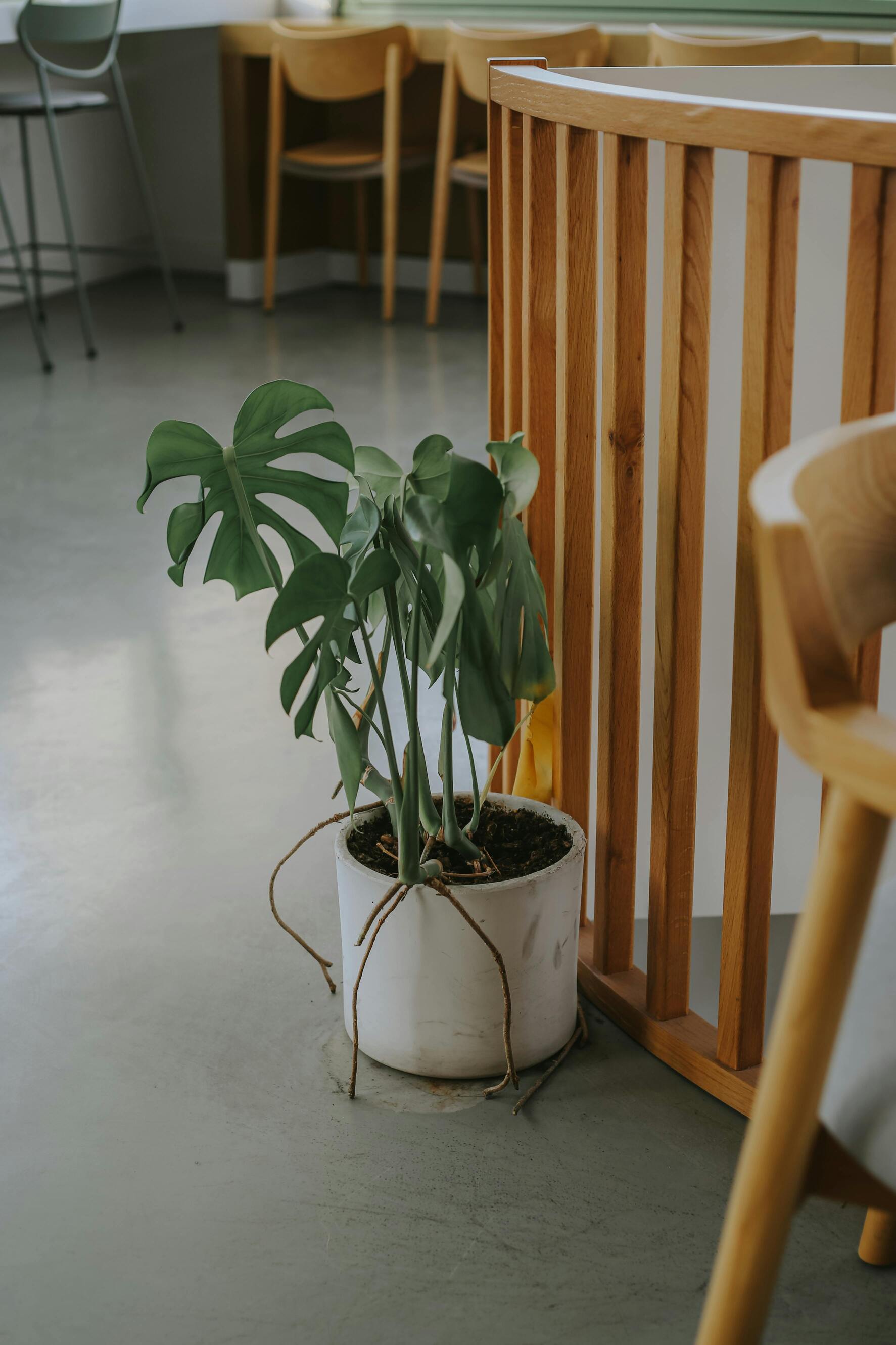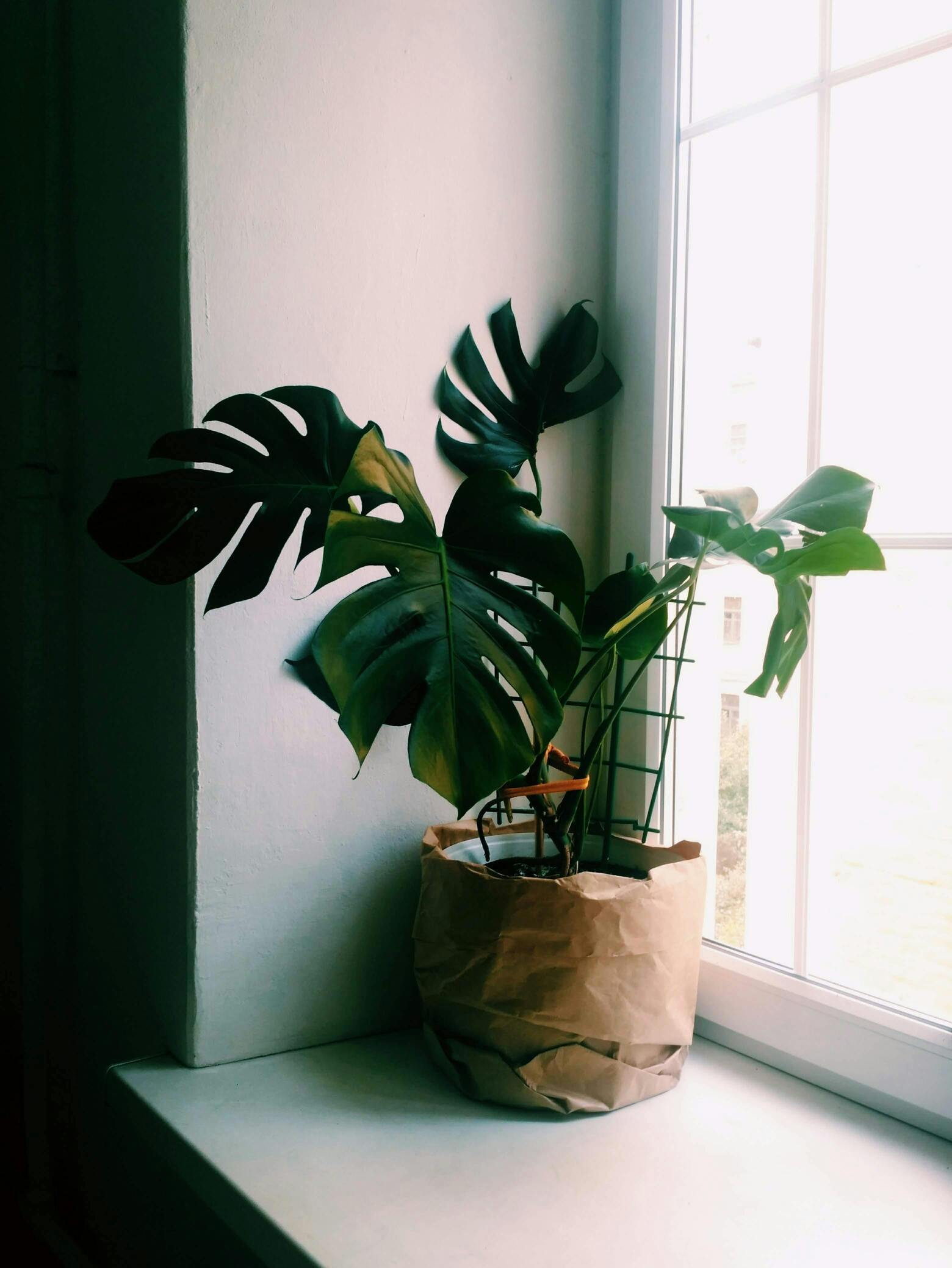Meet the Monstera Deliciosa, the tropical superstar of houseplants! Native to the lush rainforests of Central and South America, this showstopper earns its Latin name “Monstera,” meaning “abnormal,” thanks to its unique, wide, and perforated leaves that steal the spotlight in any home. Living in dense rainforests, the natural wide holes help the plant to get sufficient light all through the body. In wildlife, they can grow upto 10-15 feet tall. However, they are also available in small houseplant variants, helping you revamp your room in the cutest way possible.
Over the last few years, Monstera, popularly known as the “Swiss cheese plant,” has taken over the aesthetic world of social media and home decor by storm. Its low-maintenance nature and easy adaptability properties make it a popular choice for house plants. They offer a refreshing, sunny tropical beach vibe to every space they grow. While its lush beauty is a treat for sore eyes, its air-purifying properties make it a practical and therapeutic choice for your house. Interflora offers a convenient and thoughtful way to send plant gifts for any occasion. Whether it’s for birthdays, anniversaries, or special celebrations, ordering plants from Interflora ensures high-quality, fresh deliveries straight to the recipient’s door.

Choose The Right Spot For Your Monstera
Direct and harsh sunlight can scorch the foliage of your plant, while less sunlight can stunt your plant growth. You can check the leaves if they are starting to develop spots or turning pale, it might be a sign of lack of sunlight. So, what’s the ideal spot for your Monstera? Filtered light through a window is the perfect spot. Kitchen and bathroom windows are a great place for indirect bright sunlight with a little humidity, ideal for the plant’s growth.

Watering Your Monstera: A Balance Is Key
Balance is the keyword whenever watering any houseplant. While Monstera enjoys regular watering, it is essential to let the soil dry a little before the next water session. Overwatering can cause roots to rot, and inadequate water may lead to wilting of your plant. If it’s your first time taking care of a little green friend, you can follow these few watering guidelines for a smooth experience:
- Use your fingers to check the top soil. If it feels dry, it’s time to water.
- Watering weekly is often a good starting point for plants like Monstera.
- Water requirements may change depending on seasons: Blooming seasons like spring and summer may require more, while winter craves a lesser water level.
Feeding Your Monstera: How to Fertilize for Healthy Growth
To recreate the nutritional value of a tropical forest in South America, your Swiss cheese plant might need a little help from fertilizers. You can choose organic leaf plant liquid fertilizer and feed it every 4-6 weeks during its growth season in spring and summer. Opt for fertilizers that are rich in nitrogen, phosphorus, and potassium for natural and extensive growth. However, as the cold weather approaches, reduce feeding time to every 2 months, as overfertilizing can leave increased salt buildup in soil and damage the roots.
Pruning and Maintenance: Keeping Your Monstera in Shape
Just like your hair needs a little refreshing every other month for more natural and healthier growth, every plant needs a little bit of pruning. Regularly cut off yellow, pale, or blackened leaves to reduce overcrowding of the plant with dried leaves.
Likewise, dust can collect on the wide leaves of your Monstera, which can prevent sunlight absorption. Regularly wipe off leaves and dust off any insects or pests on the plant. Finally, shape your cuddly little plant however you like and keep it a fresh, lively touch to your home decor.
Repotting Your Monstera: How to Give It Room to Grow
Repotting is a regular and much-needed process in the healthy growth of any plant. Especially plants like Monstera, which can grow extensively! These plants require repotting every 16-24 months when roots are structured and well-built. Choose a pot about 2-4 inches wider to ensure enough room until the next repotting session. Ensure you pick nutrient-rich soil when repotting. Trim the root’s foliage a little, and do not disturb the structure of the plant too much while repotting. Remember to create a drainage hole in the new pot.
Common Problems and Solutions: Troubleshooting Your Monstera Plant
Just like the human body, plants, too can face some issues now and then. Check out how you can deal with some of these common problems to keep creating a healthy environment for your plant:

- Brown Leaf Edges: Excess use of fertilizers can cause a buildup of salt in the soil, leading to browning of the leaves. You can flush the soil using water and reduce the usage of plant food.
- Pale Leaves: Leaves can turn pale due to issues like overwatering, underwatering, and lack of abundant sunlight. Move your plant under bright areas near a window and adjust the water requirements as needed.
- Pests: Poor plant hygiene or dry air can be the cause of this. Regularly wipe leaves with a wet cloth. Spray herbal insecticides like neem water to get rid of any pests or insect manifestations.
